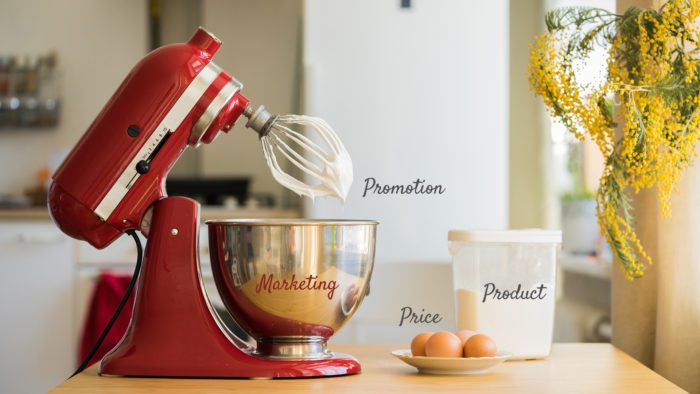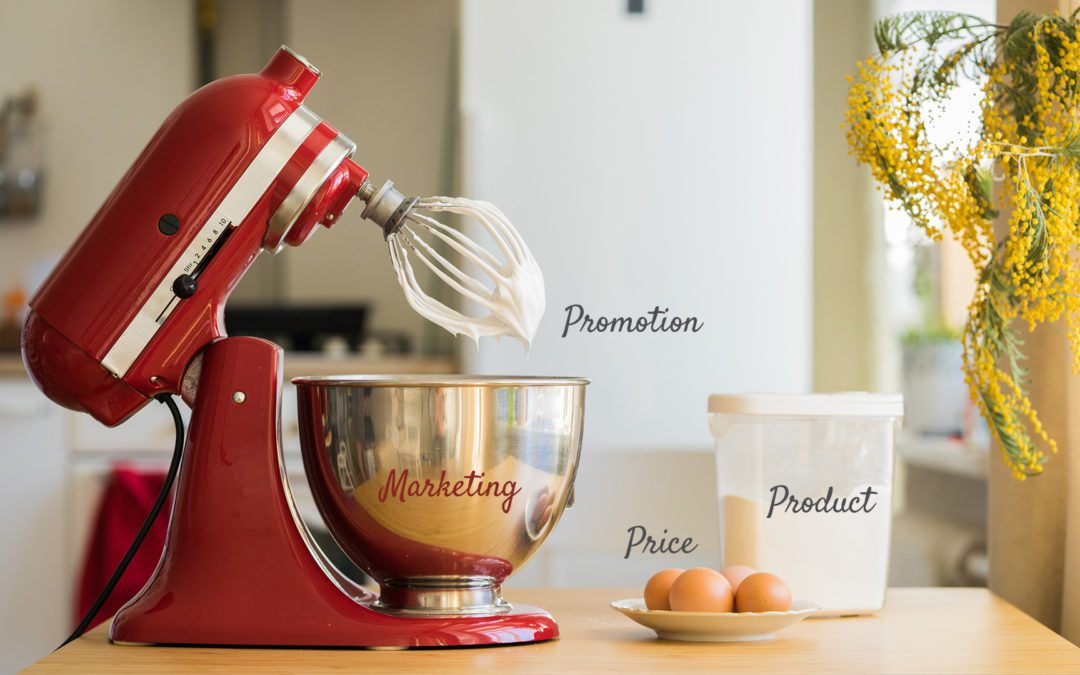Being an entrepreneur is more than creating a service you know consumers will love. While this is a great foundation, the next step might be the most important to your success: marketing! And you don’t have to be a marketing mastermind, either. You just need to know your marketing mix.

Think of your marketing mix like a recipe. All of the “ingredients” come together to form a successful marketing strategy that will promote your product to consumers and help your business thrive. Luckily, the recipe is easy to follow, and with only four parts, you can master your marketing mix in no time.
The ingredients you need for a successful marketing mix are the “4 Ps of Marketing” your product, price, place, and promotions. Understanding each part, along with how to use them, is what will make your marketing campaigns stick out against the competition, so let’s dive in.
Product
To market your product successfully, you need to know it inside and out. This may sound like a piece of cake (since you made the product, after all), but there are some fundamental questions you must know the answer to before you can add this ingredient to the mix.
First, ask yourself: What does my product or service do that no one else’s does? And no, simply saying “it’s better” won’t cut it. Outlining what sets your product apart will help you find a unique angle when introducing it to consumers.
Next, consider who needs your product and why. If your product is an ergonomic chair, why do people need it? Is it made for office workers who are experiencing pain? Or is it made for students to help improve their posture? The gap between those two reasons is vast, so you can see how simply identifying the product isn’t enough. Figuring out your “why” will help you market to the right audience, in the most effective way.
Price
The next part of your marketing mix is deciding what people will be willing to pay for your product. How much you charge for your products or services should be directly tied to the item’s value. Meaning you need to identify how much it costs to make or organize your product and what benefit it brings other people.
After you determine your cost plus the monetary value of your product’s benefit, factor in things like retail markup, seasonal discounts, and your competitor’s prices. Choose a pricepoint that you think is fair but can also stand up against pressure tests like deals you offer in the future or increased supply costs.
Place
This is where and how you will sell your product. Places include brick-and-mortar establishments or online storefronts. This step is vital because it’s bigger than just choosing a building to house your product; it speaks to your brand. For example, if you make luxury belts, you probably shouldn’t sell them at Walmart. Conversely, if your product is a desk that people can assemble themselves, Walmart might be right for you. The goal isn’t just to pick any old location; it’s to find a place that gets your product in front of people who will actually buy it.
Place also includes where you will advertise the product. It is not only the location it is sold, but the place it is seen. Again, if you’re starting a digital content-creation company, it’s probably not a good idea to hang up fliers to advertise it. But, if you’re opening a local bike shop, fliers are a great way to spread the word in your community.
Promotion
Last, but certainly not least, is promotion. Promotion is where you convince your customers that they need your product and the price they pay is worth it. Promotion includes public relations, advertising, and the media campaign to introduce your product to the world.
A lot of great marketers combine elements of place and promotion by figuring out where they want to advertise before developing a strategy to do it effectively. But outside of where it’s publicized, promotion includes seach engine optimization (SEO) for your product’s website. How will people find out you exist if they don’t watch TV or have social media? If there’s no way for them to see an ad, think of what keyword they might search that can lead them to your brand.
Identify and define these parts as they relate to your business, and voilà! You’ve successfully made your marketing mix! Use these factors to devise the right strategy for your business to market that product you know consumers will love.


Recent Comments